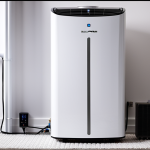Understanding LED Grow Lights and Their Technology
LED grow lights use light-emitting diodes tailored to support indoor plants by providing specific wavelengths that mimic natural sunlight. Unlike general indoor plant lighting, these LEDs focus on key spectrum areas such as blue and red light, which are crucial for photosynthesis and plant development. This targeted approach makes artificial lighting for plants more efficient than traditional bulbs.
There are several types of LEDs: from full-spectrum LEDs that replicate sunlight’s broad spectrum to dual-band LEDs emphasizing blue and red wavelengths. Full-spectrum LEDs are ideal for all growth stages, while focused spectrum LEDs optimize growth for specific phases like flowering or vegetative growth. Advances in LED technology, such as enhanced chip design and better heat dissipation, have improved brightness and lifespan, making home use practical and affordable.
Also read : Protect your uk garden: effective strategies to keep wildlife pests at bay
Innovations include adjustable spectrum LEDs that let indoor gardeners modify light conditions per plant needs. These developments help overcome challenges like inconsistent natural lighting inside homes, ensuring plants receive sufficient energy for photosynthesis year-round. Such technologically savvy solutions bring high-performance indoor plant lighting into everyday living spaces, supporting healthier and more vibrant houseplants.
Unique Lighting Challenges for UK Houseplant Enthusiasts
Indoor plant lighting in the UK faces specific difficulties due to low-light conditions and notable seasonal light variation. UK homes often get limited natural sunlight, especially during autumn and winter, when daylight hours shrink significantly. These darker months cause common growth issues such as slowed photosynthesis, leggy plants, and pale leaves, which signal insufficient energy for healthy development.
Also to see : Effective strategies to safeguard against soil erosion in your sloped uk garden
Why does natural window light sometimes fall short? UK windows often face north or are shaded by nearby buildings or trees, reducing direct sunlight exposure. Additionally, cloudy weather prevalent in the UK further diminishes available light. This combination makes relying solely on natural light challenging for maintaining vibrant indoor greenery.
In response, many UK indoor gardeners turn to LED grow lights because they provide consistent artificial lighting for plants regardless of outdoor conditions. These LED systems deliver precise wavelengths essential for photosynthesis, offsetting the lack of adequate sunlight. Practical use of artificial lighting for plants in UK homes helps bridge gaps in natural light, enabling healthier houseplant growth throughout the year despite environmental constraints inherent to the region.
Benefits of Using LED Grow Lights for Houseplants
LED grow lights significantly enhance photosynthesis by delivering targeted wavelengths, primarily blue and red light, which plants absorb most efficiently. This tailored artificial lighting for plants boosts growth rates, promotes robust root and leaf development, and supports flowering and fruiting phases, leading to healthier houseplants.
Energy efficiency is a pivotal benefit. Compared to traditional bulbs, LED grow lights consume less power while producing more usable light, making them cost-effective for extended indoor plant lighting. Their longevity reduces replacement frequency, saving money and minimizing waste.
LED grow lights offer versatility for diverse plant species and indoor spaces. Adjustable spectrum LEDs enable users to customise light settings to suit specific plant needs, from seedlings to mature specimens. Compact designs fit various room sizes, ensuring optimal light coverage without excess heat, which can stress plants.
Overall, the benefits of LED grow lights make them an indispensable tool for anyone aiming to improve indoor greenery. By integrating efficient, spectrum-specific, and adaptable lighting, these systems address many limitations posed by natural sunlight scarcity in typical indoor environments.
Benefits of Using LED Grow Lights for Houseplants
LED grow lights offer significant benefits that directly contribute to healthier houseplants and improved indoor greenery. One key advantage is their ability to provide optimal wavelengths essential for enhanced photosynthesis, accelerating growth and promoting robust foliage and flowering. Unlike natural light, which fluctuates based on season and weather, LED grow lights deliver consistent energy, ensuring plants receive the right light spectrum regardless of external conditions.
Energy efficiency is another major benefit of LED grow lights. They consume far less electricity than traditional incandescent or fluorescent bulbs, making them cost-effective for sustained use. This efficiency translates to lower energy bills without compromising plant health, an important consideration for UK indoor gardeners managing limited daylight.
Flexibility is also a strong point. LED grow lights come in various sizes and intensities, accommodating different plant species and space constraints—from small herb pots to larger ornamental plants. Many models allow users to adjust light intensity and spectrum, tailoring conditions to specific growth stages or plant needs. Together, these features make LED grow lights an invaluable tool for anyone serious about improving indoor greenery and achieving thriving, vibrant houseplants in any environment.
Comparing LED Grow Lights to Natural Light and Other Artificial Solutions
Understanding the differences between LED grow lights and natural sunlight is crucial for effective indoor plant lighting. Plants respond best to specific light spectra, mainly blue and red wavelengths. While sunlight offers a broad spectrum, the intensity varies with weather and season, making it inconsistent. In contrast, LED grow lights deliver a controlled, targeted spectrum that promotes photosynthesis more efficiently in indoor environments.
When comparing LEDs to other artificial lighting like fluorescent and incandescent bulbs, LED grow lights clearly outperform them. Fluorescent lights often lack sufficient red wavelengths, limiting flowering and fruiting. Incandescent bulbs waste much energy as heat and provide poor spectral quality. LED lighting, by contrast, offers superior energy efficiency and longevity, reducing electricity costs and maintenance.
UK growers frequently report improved plant health using LED grow lights instead of relying on fluctuating natural light or traditional bulbs. Expert horticulturists endorse LEDs for their versatility and ability to tailor light output to specific plants or growth stages. This precision makes LED grow lights an increasingly preferred houseplant lighting solution, especially where UK indoor gardening faces challenges like low-light conditions and seasonal light variation.
Comparing LED Grow Lights to Natural Light and Other Artificial Solutions
Understanding how LED grow lights measure up against natural light is crucial for indoor gardeners. Plants primarily respond to specific light wavelengths—especially blue and red—that LEDs can precisely deliver. Unlike sunlight, which varies in intensity and spectrum throughout the day and seasons, LEDs provide consistent and targeted artificial lighting for plants, ensuring stable photosynthesis processes.
When comparing LED grow lights to traditional artificial lighting such as fluorescent or incandescent bulbs, LEDs stand out for their superior energy efficiency. Fluorescent lights emit a broader spectrum but often waste power with non-useful wavelengths. Incandescent bulbs generate excessive heat, increasing energy costs and risking plant stress. LEDs, conversely, produce minimal heat while focusing energy exactly where plants need it, enhancing plant growth with less electricity.
Users in the UK praise LED grow lights for overcoming challenges related to low natural light availability, especially during winter. Experts confirm LEDs can complement sunlight effectively or serve as a sole light source in low-light indoor environments. This combination of precise wavelength emission and energy-saving technology positions LED grow lights as the preferred houseplant lighting solution over more traditional options.
Choosing and Setting Up LED Grow Lights for Your Home
Selecting the right LED grow lights is essential for effective indoor plant lighting. Key factors include light intensity, spectrum, and size, which should match the needs of your specific plants. Seedlings need lower intensity and more blue light, while flowering plants benefit from stronger red wavelengths. Understanding these differences helps optimise growth and energy use.
Begin setup by positioning the LED grow light at an appropriate distance—usually 30 to 60 cm above plants—to mimic natural sunlight without causing heat stress. Duration matters: 12 to 16 hours daily supports healthy photosynthesis, but too much light can harm plants. Use timers to maintain consistent cycles.
Placement should consider room layout and plant variety. Compact lights suit small spaces, while larger panels cover multiple plants evenly. Reflective surfaces nearby can enhance light distribution, improving efficiency. For UK users, products with adjustable spectra allow adaptation to seasonal changes and diverse species, enhancing indoor plant lighting outcomes.
Investing in top-rated LED grow lights designed for home use ensures energy efficiency and durability, providing long-term benefits. Following a thoughtful setup guide tailored to your home environment maximises the potential for thriving, vibrant houseplants.
Understanding LED Grow Lights and Their Technology
LED grow lights are specifically engineered to emit wavelengths that optimize photosynthesis for indoor plants. These lights utilize light-emitting diodes designed to produce blue and red spectrum light, essential for chlorophyll absorption and energy production. Unlike conventional lighting, LED technology precisely targets these spectra, making artificial lighting for plants more effective and energy-efficient.
Types of LEDs vary between full-spectrum models and dual-band units. Full-spectrum LEDs replicate the entire range of natural sunlight, supporting all growth stages. Dual-band LEDs focus primarily on blue and red light, which benefits vegetative growth and flowering phases respectively. This distinction allows indoor gardeners to tailor lighting according to plant developmental needs.
Recent advances in LED technology have enhanced chip design and heat management. Improved heat dissipation prevents overheating, which can degrade light quality and shorten lifespan. These innovations result in brighter, longer-lasting LED grow lights suited for household use. Additionally, adjustable spectrum LEDs offer the flexibility to modify light output, adapting to different plant species or growth phases. This combination of efficiency and customization has made LED grow lights a preferred choice for indoor plant lighting and sustainable, year-round indoor gardening.
Understanding LED Grow Lights and Their Technology
LED grow lights function by emitting specific wavelengths tailored to plant needs, primarily blue and red light crucial for photosynthesis. These wavelengths correspond to chlorophyll absorption peaks, enhancing energy conversion and growth efficiency. Unlike general indoor plant lighting, LEDs provide artificial lighting for plants with precision, which makes cultivating indoors more effective.
There are various types of LEDs used in indoor plant lighting. Full-spectrum LEDs replicate sunlight’s broad spectrum and support all growth stages. Dual-band LEDs emphasize blue wavelengths for vegetative growth and red for flowering, enabling targeted plant development. Adjustable spectrum LEDs allow customization of light output, catering to diverse species and growth phases.
Technological advances have refined LED chip design, improving light intensity and heat management. Enhanced heat dissipation ensures longer lifespan and stable performance, crucial for home use. Compact, energy-efficient designs reduce electricity consumption while delivering intense, consistent light. These innovations position LED grow lights as indispensable tools for indoor gardeners seeking effective artificial lighting for plants.




